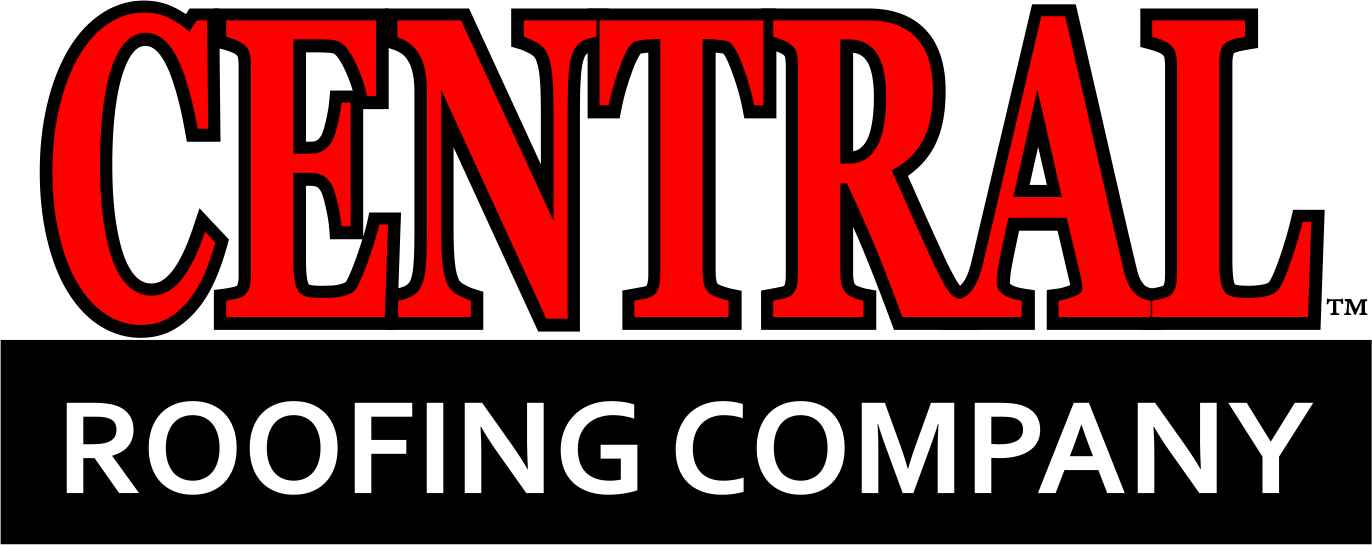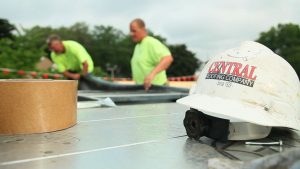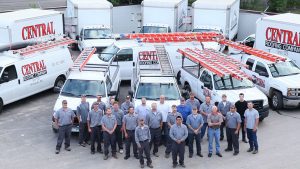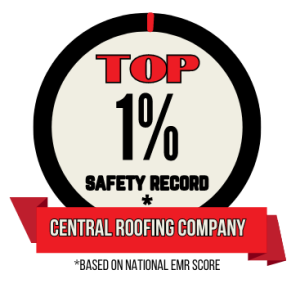Personal Health and Safety
Training provides employees with the knowledge of Central Roofing Company’s Safety & Health Program on topics including (but not limited to) safety planning for specific job sites based on physical location and scope of work logistics, company incident or injury reporting expectations and procedures, proper use and storage of tools and equipment, protective clothing and equipment, proper lifting and other body protection expectations, job site security, general first aid, and CPR.
Fall Protection
The purpose of this training is to minimize employee injury resulting from falls and to provide compliance to applicable OSHA standards regarding fall prevention and ladder and scaffolding safety. Our objective is to reduce the risk of potential incidents caused by inadequate work and/or safety practices with an emphasis on the use of personal fall arrest systems; fall restraint and rescue planning; and protection from common roof hazards such as slopes, skylights, holes, and roof openings.
“Right to Know” Exposure Risks
It is a matter of company policy to provide our employees with information about hazardous chemicals on the job site by way of an overview of the industry standardized and practiced hazard communications requirements (OSHA 29CFR 1910.1200 & OSHA 29CFR 1929.59 – Hazard Communication Standards). Training includes the employee’s “right to know,” establishes and/or reinforces uniform rules and regulations throughout the company to educate all employees in the safe handling of hazardous materials in their work area as well as the inherent dangers these chemicals may possess, and safe handling and/or personal protective equipment use.
HAZMAT Handling
The Environmental Protection Agency (EPA), OSHA, and Department of Transportation (DOT) each have separate training rules, but there is often overlap among the various requirements. OSHA’s goal is to reduce worker injury and illness. DOT requires all employees who handle or transport hazardous materials to receive general awareness, function-specific, and safety training. EPA training focuses on eliminating the release of pollutants and wastes, both on and off-site. Applicable agency training is provided to Central Roofing Company employees based on their work function and/or their job site for their purpose of safely and correctly handling and disposing of potentially hazardous waste.
Safe Equipment Use
Proper use and storage on job sites of general construction equipment such as fall restraints, ladders, saws, grinders, electrical cords, compressors, and more, are demonstrated and discussed. Advanced training for the use of motorized equipment, slings, cranes, material hoists, overhead hoists, personal hoists, elevators, and conveyors is provided in compliance with OSHA standards (OSHA 29CFR 1910.184 – Slings; OSHA 29CFR 1910.179 – Overhead and Gantry Cranes; OSHA 29CFR 1926.550 – Cranes and Derricks; OSHA 29CFR 1926.552 – Material Hoists, Personal Hoists, Elevators; OSHA 29CFR 1926.554 – Overhead Hoists; OSHA 29CFR 1926.555 – Conveyors).
Electrical Safety
Related to Safe Equipment Use, electrical components and equipment are in use on rooftops and around vehicles. Employees are trained on their proper use, maintenance, and storage to prevent accidents or incidents of electric shock. Related to overhead powerlines and rooftop equipment, employees are trained on the identification of hazards, industry-standard safety expectations, and site-planned precautions required to work on-site.
Fire Safety
Identification of fire hazards on the roof and around vehicles as well as safety planning for fire prevention, fire emergency response, reporting, and investigations, and employee safety and evacuation plans in the event of a fire on a job (site-specific).
Overhead Powerline Safety
Training for all employees on how to respond if a crane, equipment, or vehicle is ensnared in an overhead electrical powerline. Advanced training for crane operators and equipment operators if entanglement with powerlines occurs during use. Evacuation, emergency response, and reporting plans are site-specific. Also see: Fire Safety as it may apply.
Flagger Training
Central Roofing Company-provided training for traffic direction in the event it’s needed at or around a job site for the purpose of completing work-related tasks. This is in addition to OSHA-provided Flagger Training required by the Roofers & Waterproofers Local 96 labor union.
Rough Terrain Operator Training
Central Roofing Company-provided training for lull-operators driving equipment on rooftops or on the ground around job sites. This training is for all employees and is in addition to OSHA Rough Terrain Forklift Operation Certification required for advancement within the Roofers & Waterproofers Local 96 labor union.
Rigger Training
Central Roofing Company-provided training for all employees who work on project sites. The purpose of the training is to instruct and reinforce training on properly securing materials and equipment to be hoisted onto a roof or roof section. This training is for all employees and is in addition to OSHA Rigger Certification required for advancement within the Roofers & Waterproofers Local 96 labor union.



